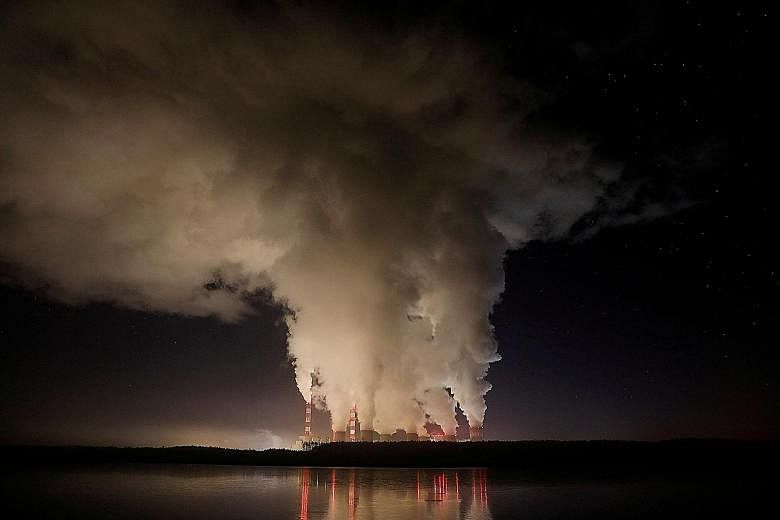The number of coal-fired power plants under development worldwide fell last year, as climate concerns and competitive renewable energy projects chipped away at coal's viability, a study released yesterday showed.
The study by four non-governmental organisations looked at key indicators of the coal power sector, including capacity growth, construction starts and the amount of capacity allowed for construction.
For the fourth consecutive year, despite an uptick in the number of new coal plants going into operation, the overall global pipeline for new coal power capacity continued to contract.
Coal power capacity under construction and in pre-construction development fell two-thirds from 1,468 gigawatts (GW) in 2015 to 499.2GW last year, say the authors.
Capacity being built fell 16 per cent last year compared with 2018.
Globally, the amount of power generated from coal fell 3 per cent last year compared with 2018, with coal plants operating on average 51 per cent of their operating hours, a record low.
"Global power generation from coal fell by a record amount in 2019, as renewable energy grew and power demand slowed down," said Dr Christine Shearer, lead author of the study and director of the coal programme at Global Energy Monitor (GEM), which tracks global coal plant development.
Coal plant retirements also accelerated last year. But, perversely, new plants, mainly in China, led to additional global capacity but ultimately less power generation because of reduced usage.
"The number of new plants added to the grid accelerated, meaning that the world's coal plants were operated a lot less - more plants generating less power. For banks and investors that continue to underwrite new coal plants, this means weakened profitability and increased risk," Dr Shearer added.
Burning coal in power stations and steel mills is the single largest source of carbon dioxide (CO2), the main greenhouse gas heating up the planet. It is also a major source of harmful air pollution.
China is the world's largest greenhouse gas polluter and coal consumer, with about half the global fleet of coal-fired power stations. The authors found that outside China, the global coal fleet shrank overall, with continued retirements in the United States and the European Union. Nearly half of the retired coal power capacity last year was in the US because of cheaper gas and renewables.
Globally, construction starts were down 5 per cent from 2018 and 66 per cent from 2015, compared with last year, said the study's authors from GEM, Greenpeace International, the Sierra Club, and the Centre for Research on Energy and Clean Air.
Despite the fall in new project starts, the coal fleet grew by 34.1 GW last year, the first increase in net capacity additions since 2015. Nearly two-thirds of the newly commissioned capacity was in China and it came online after being under construction for several years.
China's continued additions to its coal fleet put at risk global targets to limit planetary warming, even if the plants are running only 50 per cent of the time or less.
For example, from March 1 to 18, more coal-fired capacity was permitted for construction in China (7.9GW) than in all of last year (6.3 GW), according to GEM.
The United Nations' peak climate body, the Intergovernmental Panel on Climate Change, said the global economy needs to cut CO2 emissions by nearly half by 2030 to try to limit warming to 1.5 deg C above pre-industrial levels.
Meanwhile, in South-east Asia, the commissioning of new coal plants has been slowing.
The report said: "South-east Asia is often hailed as the next centre for coal plant development. Construction starts there have fallen over 85 per cent, from 12.8GW in 2016 to 1.8 GW in 2019."
The coronavirus pandemic also led to a delay for some coal projects in Asia, said GEM.
In South and South-east Asia, GEM identified 15 locations totalling an estimated US$21 billion (S$30 billion) in capital outlays where coal-fired power plant construction is now on hold due to workforce and supply chain disruptions because of the virus. Most of the projects are in Indonesia.


